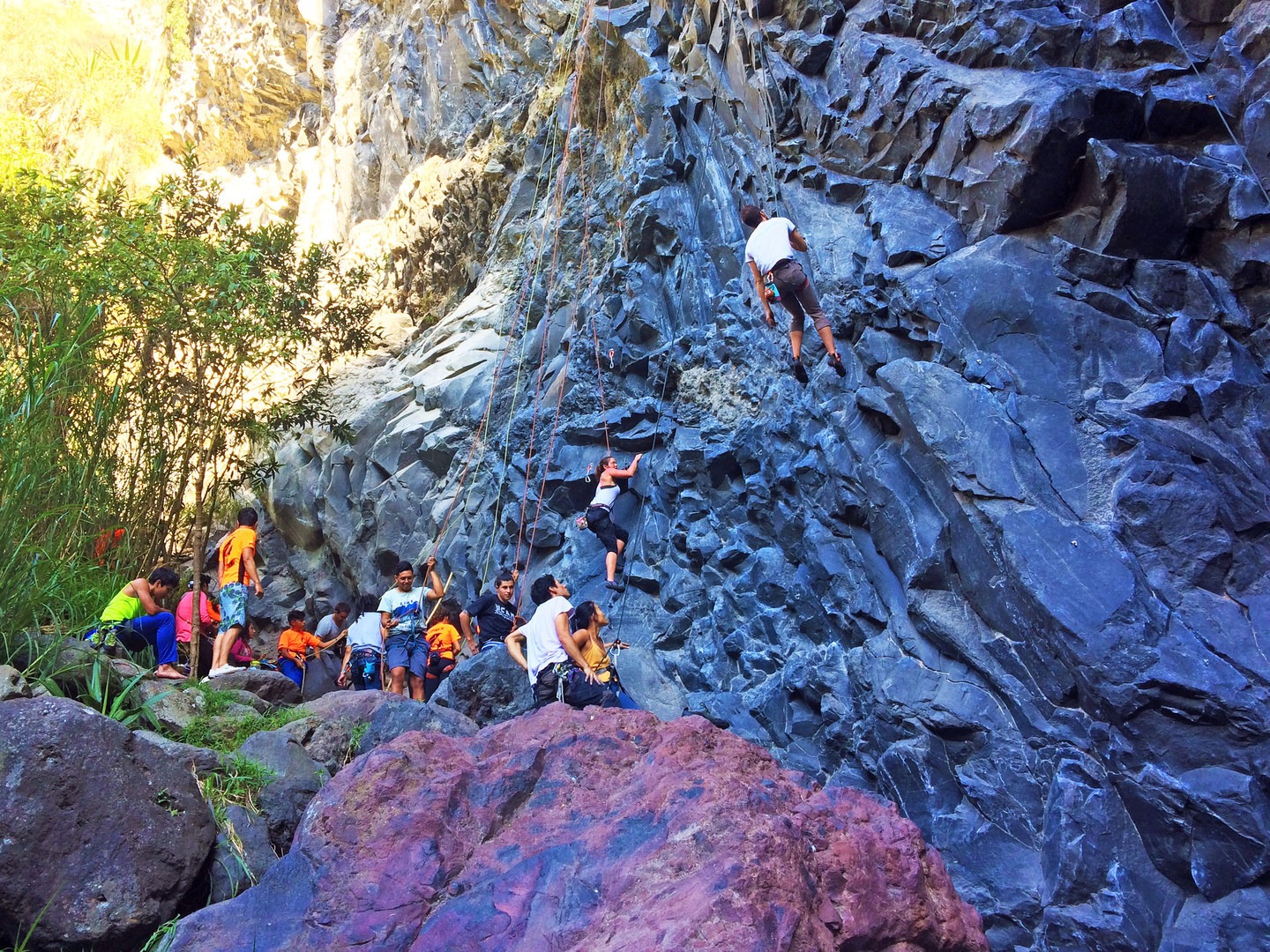You are here
Baños, short for Baños de Agua Santa, is so named for the town’s public hot spring baths, regarded as holy water. Baños is a sacred place, and the locals believe their town is blessed with these hot springs (or at least blessed with a boom of tourism because of them). Baños, the "Gateway to the Amazon," is also commonly referred to as the adventure sports destination in Ecuador.
Less visited are the climbing crags located at the west end of Baños inside the Baños adventure park, which includes the crags, zip lining, and the Baños Zoologico (zoo). Formerly known as Zoologico Vertical, this crag is considered the best in Ecuador, though that’s probably just because the others are far less trafficked and even farther off the beaten path.
To get here, go west from the heart of town along the main road in and out of town, which bears the incredibly original but apt name Via a Baños. As you walk down this road, you will see lush greenery on the right and a startling, huge gorge with a steep walls to the cascading waters of the Rio Pastaza and a bridge crossing over it. That is to be your path. When you reach it, turn right onto the bridge road, which is called Via Alterna Baños-Patate. We never figured out what potatoes had to do with it all.
Cross the bridge and under the archways leading into the zoo, beyond which you find a path taking a hard left toward the river. This is also the entrance to the Parque Adventura San Martin, so follow the signs for that. Shortly down the path, you’ll pass a little shop renting out harnesses, ropes, and helmets. For $30, you can get all that and a guide. If you’re comfortable leading (top anchors are not easily accessible except for a very long rappel) and have your own gear, you’ll just need to pay a $2-per-person entrance fee. From there, the path leads you down a 100-meter descent into the Canyon de Santa Baños, where the Rio Pastazo rages down the valley, its white-frothed waters coursing into the heart of the Amazon and violently carving out the basalt corridors.
The climbing wall itself is small, maybe 60 meters wide and 20 meters high, with two main belay levels separated by a precarious looking but seemingly stable logjam built up by river. The left most platform routes are generally easier than the lower routes. There are about 20 single pitch routes, ranging from 5a to 7c+ (though most of the routes are graded in the 6a to 6b+ range), and a handful of multi-pitch routes (La Hoz, 6b; La Boa 7a+; La Cuchilla 6a+).
Be aware of the season! If you are visiting in the rainy season (November to April), many of these routes will be completely inaccessible due to high river flow that completely submerges the lower part of the crag. At the time of this writing in January, the farthest right climbs dotted up the wall above a particularly nasty looking whorl of rapids. This area of the river is dangerous, because it’s right where the water gets funneled into a narrow basalt corridor, meaning a large volume of water is suddenly given very little space through which to move. Not the place to try deep water soloing!
As you climb, you’ll notice a significant degree of difficulty stemming from the rock time alone. The volcanic basalt columns have been carved out by the water of the river for centuries, leaving them smooth and polished, which is only made more slippery and difficult to grasp by the fine ash coating it received from the daily spewings of the Tungurahua volcano (5,023 m). This mountain looms right over the town of Baños and is considered one of the most active volcanoes in South America, featuring near daily eruptions.
Overall, it’s an excellent condensed spot with a high volume of routes, if you don’t mind difficulty being a couple grades harder than their official rating due to the volcanic “grease factor." Even if the climbing is tougher than you want, the walk down is worth it alone. With the gentle river valley out to the right set against the dramatic bluish-black cliffs against which the river crashes, the setting is truly remarkable. Take a lunch break on the sandy shores of the river (but bring bug spray to ward off the biting sand flies).
The Routes
It is possible but unlikely that new routes have been added, as there has been very little additional development since original bolting in the late 1990s by Eli Helmuth. Many bolts and anchors were replaced in 2011, but few routes have been added in over 20 years.
In order from left to right when looking at the crag:
Upper Belay Platform
- Apache, 7a+
- La Hoz, 6b, 6c+, 6a (3 pitches)
- El Trepadero, 5
- Guambrazo, 6b
- La Reglata, 6b+
- Sucia, 6c
- La Guazon, 7c+
- Los Murcielgos, 6b+
Lower Belay Platform
- Paso del Tapir, 7b+
- La Bacalad, 6b+
- Los Cabros, 7c
- La Boa, 7b, 7a+, 6c+ (3 pitches)
- La Ardilla, 6c
- EL Abrazo Del Oso, 7b+
- El Canillazo, 7c+
- Pastaza, 7a+
- La Cuchilla, 6c, 6a+ (2 pitches)
Logistics + Planning
Current Weather: Powered by Dark Sky























Comments
Sign In and share them.